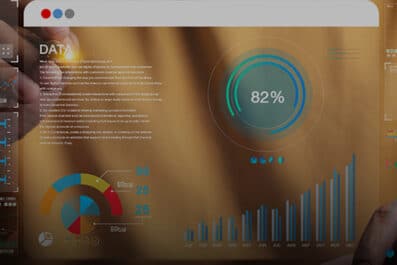Cloud Computing Demystified: A Guide for Small Businesses
Cloud computing! A buzzword used everywhere, but what does it really mean?
A cloud computing service is a computing service delivered over the Internet. It is a powerful, cost-effective way to access and manage data and applications.
 5 Mins Read
5 Mins Read 
It’s not over here!
There are many things you need to know, If you are a business owner providing any IT services like web application development, web design, front end, back ends etc.
This guide will walk you through the basics of cloud computing and how it can help your businesses.
What is Cloud Computing?
Imagine how different people from different locations access the same data.
Well, Credit goes to cloud computing!!
Your file, applications, data whatever it may be you can access it from anywhere if you have an internet connection.
This is called cloud computing.
Cloud computing refers to providing computing services through the internet, granting users access to resources like storage, processing abilities, and software applications as needed.
Rather than depending solely on local servers or personal devices, cloud computing allows users to tap into these resources from any location with an internet connection.
How does Cloud Computing Work?
Cloud computing works on the internet connection which includes a browser, accessible client device, and cloud software application on the front end, and a database, server and computer on the back end.
The data stored on the backend is accessed by the front end. A central server facilitates data exchange by managing communication protocols between the front and back ends.
Front-end and back-end are part of web application development.
Cloud computing depends significantly on virtualization and automation technologies. Virtualization enables seamless abstraction and provisioning of services and the underlying cloud systems. Meanwhile, automation empowers users by offering extensive self-service capabilities to provision resources, link services, and deploy workloads without direct involvement from the cloud provider’s IT staff.
Cloud Service Models
There are three main types of cloud computing services i.e. software as a service (SaaS), Infrastructure as a service (IaaS) and Platform as a Service (PaaS).
- Software as a Service (SaaS)
SaaS is a complete product managed and run by the service providers. Utilizing cloud computing capabilities enables the use of applications like Figma, Google Docs, and Zoom without requiring software installation on your device. These software applications reside on a cloud provider’s servers and are accessible to users from anywhere with an internet connection through the SaaS model. SaaS remains a favoured option for businesses, irrespective of size, due to its numerous advantages, including cost-effectiveness, scalability, and user-friendly accessibility.
- Infrastructure as a Service (IaaS)
As the name suggests infrastructure, IaaS provides a cloud-based infrastructure, such as virtual machines, storage, and networking, that businesses can use to run their applications. IaaS is often cheaper than purchasing and maintaining physical hardware and can provide businesses with more flexibility in terms of scalability.
- Platform as a Service (PaaS)
Platform as a Service is nothing but the toolset. PaaS, a cloud computing service, furnishes a comprehensive development setting for building, testing and deploying applications. Typically, it is presented through a user-friendly interface that conceals many intricate technical aspects.
AWS Lambda, Elastic Beanstalk, and Google App Engine stand as additional examples of PaaS services available in the market.
Cloud Deployment Model
There are different deployment models are present in cloud computing to cater for your business needs.
- Private Cloud
One company that only has access to a private cloud, which is either run in-house or by an outside vendor. It provides improved resource and data control as well as security. Businesses with stringent compliance and security requirements might consider private clouds.
- Public Cloud
It is common for several businesses or people to share computing resources in a public cloud. It is run and maintained by an outside cloud service provider. Users can save money by just paying for the resources they utilize with public clouds.
- Hybrid Cloud
The best features of both private and public clouds are combined in hybrid cloud solutions. They let businesses take advantage of public clouds’ scalability and affordability while retaining sensitive information and vital apps in a private cloud. With hybrid clouds, companies may customize their IT infrastructure to meet their unique requirements while still maintaining flexibility.
Why Cloud Computing is Important?
Cloud computing has gained immense significance in our digital era, offering businesses, particularly small and medium-sized ones, a way to harness technology without heavy investments in hardware or software.
It enables organizations to flexibly scale their IT resources based on demand, optimizing resource utilization. This flexibility proves especially advantageous for project-oriented entities where computing needs vary with active projects.
Moreover, cloud computing delivers substantial cost benefits. By eliminating the need for frequent hardware purchases and providing seamless access to updated systems without installation hassles, it significantly reduces IT expenses.
IT services like web design services, backend and frontend development, etc leverage a cloud computing platform to build, test and deploy the application.
When equipped with proper security measures, a cloud environment can match, if not surpass, the security levels of traditional IT setups.
In essence, cloud computing serves as a pivotal catalyst for digital transformation, offering efficiency, scalability, and adaptability across diverse industries. In an era dominated by digital progression, grasping cloud computing fundamentals becomes imperative.
This knowledge equips individuals to confidently navigate the digital landscape, enabling informed decisions on leveraging cloud computing for organizational advancement.




